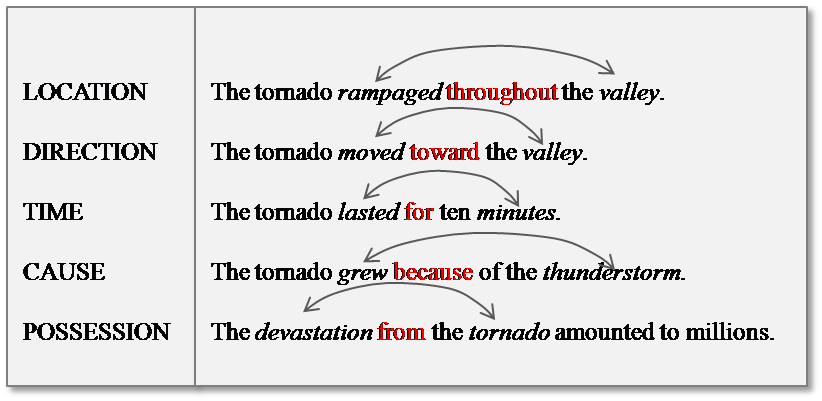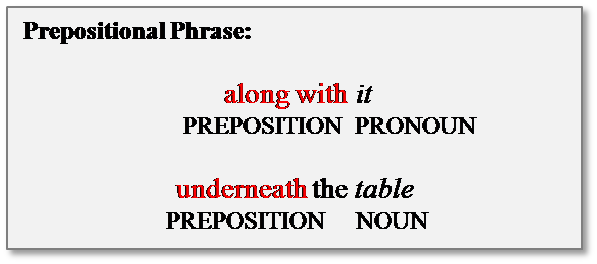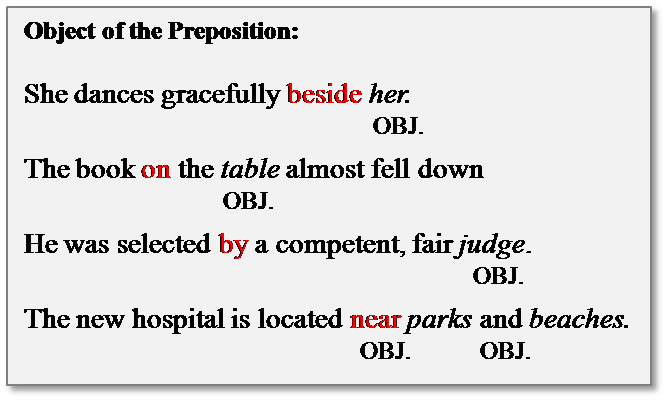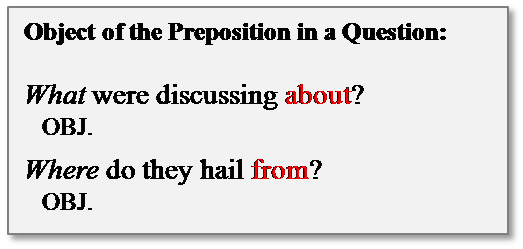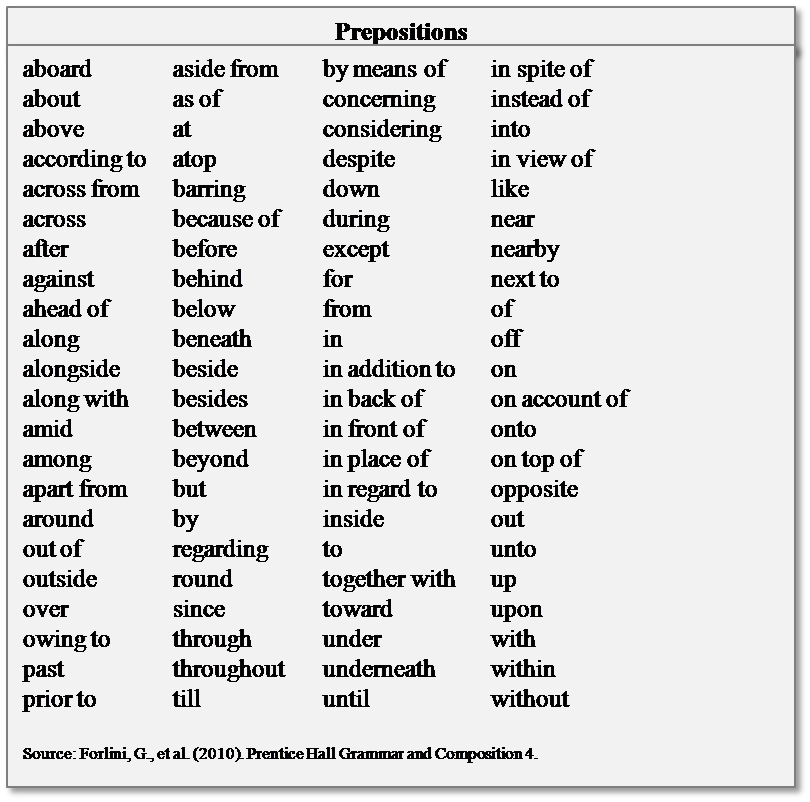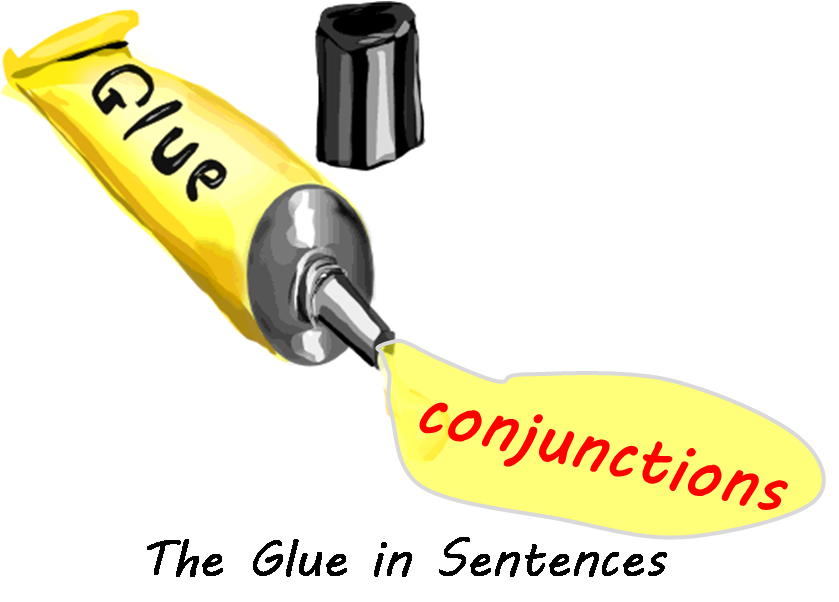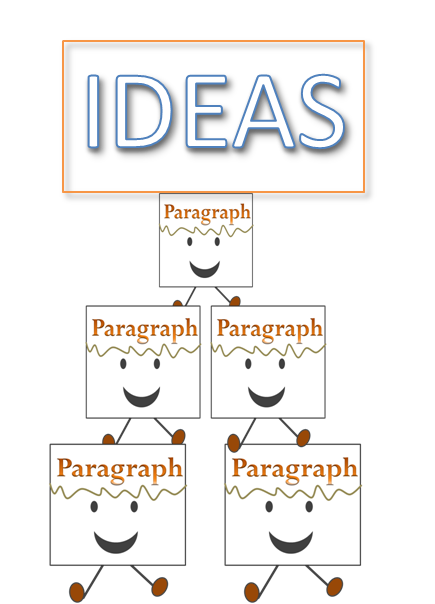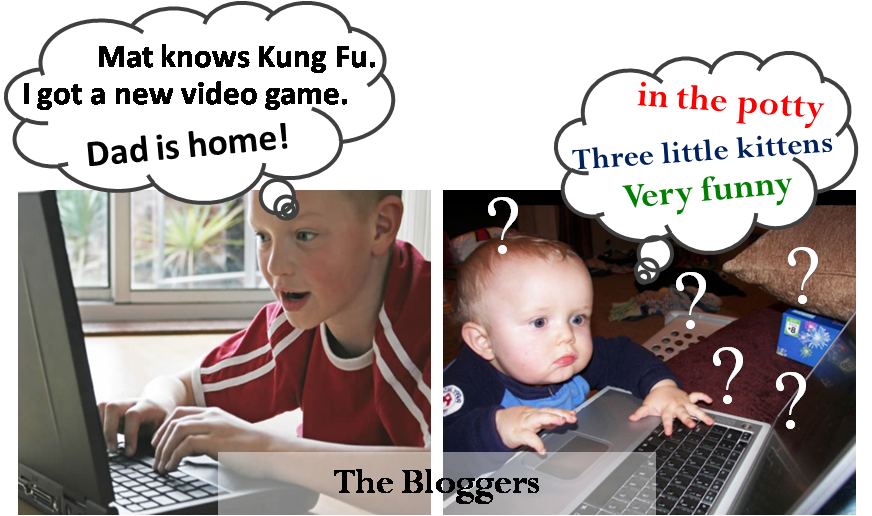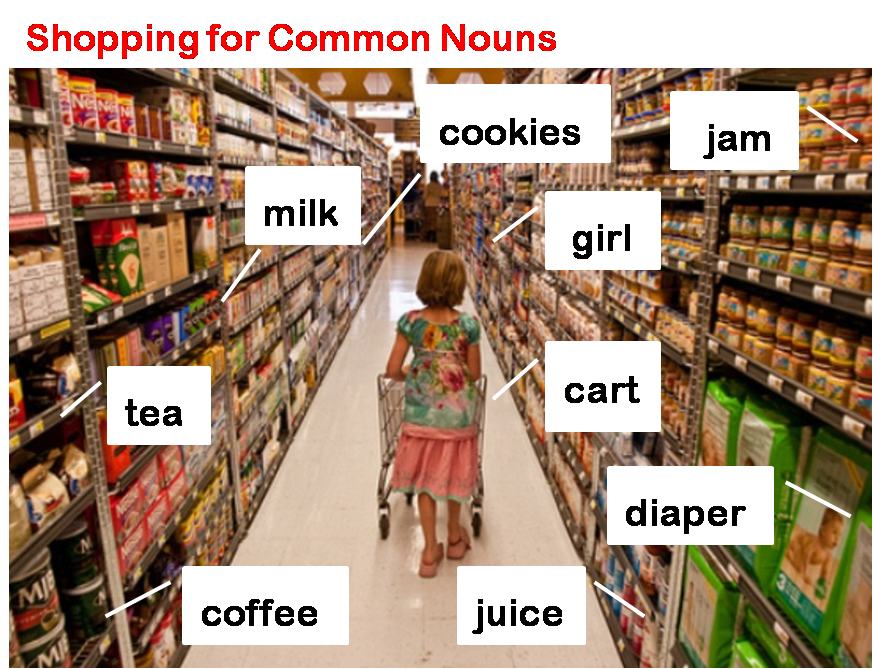What is a Preposition?

What is a Preposition? Expressing Relationships of Words
Our study of the different parts of speech cannot be complete without learning about prepositions. In truth, we have been using prepositions all the time in our everyday speech.
Common prepositions like at or in seem to imply a particular position or location. However, there are more to prepositions than just expressing physical positions for it establishes relationships as well particularly the relationship of the verbs and nouns. In the first example, the verb jumped is related to the noun shelf.
What is a Preposition?
A preposition is a kind of connector for it expresses the relationship of the noun or pronoun that were used to other words in the sentence. This relationship may express a location, direction, time, cause or possession. The position that a preposition holds in a sentence then is significant for it establishes a particular relationship.
Study the examples below and understand the relationship expressed by the following prepositions.
As you will notice, a preposition is always a part of a prepositional phrase. A prepositional phrase is a group of words that contain a preposition plus a noun or a pronoun. Remember, a phrase does not imply a complete thought like a sentence.
The noun or pronoun with a preposition is known as the object of the preposition. Objects can have more than one modifier. Moreover, a prepositional phrase may have several objects.
However, prepositional phrases can be broken up. You do this when asking questions.
Here is a list of the prepositions that you may use in your composition.
What is a Preposition? It is part of the prepositional phrase. If it is used by itself, then it is not a preposition.
What is a Preposition? Prepositions can function as adverbs. In sentence A, the prepositional phrase “up the ladder” is modifying the verb “climbed”. In this format, the preposition acts like an adverb. However, not all prepositions that act as adverbs are really prepositions. Sentence B used “up” but this is not a preposition because it is not a part of a prepositional phrase. In this instance, “up” is just an adverb.
A preposition functions like an adverb if it is modifying a verb, adverb or adjective. There are several prepositions that can be used as adverbs, namely, around, before, behind, down, in, off, on, out, over and up.
Prepositions may also function as adjectives.
The prepositional phrase “with the red flowers” describe the bag and function as an adjective. Prepositions that act as adjectives modify a noun or a pronoun.
Again, be careful about using prepositions by itself for you may end up with just an adjective like in Sentence B. A preposition is ALWAYS a part of a prepositional phrase like in Sentence A.
Many are already familiar with the common prepositions, but the usage if these connectors is often difficult. Many of the errors in grammar is about using the wrong prepositions. The only way to get it right is by reviewing and practicing. Like most things, practice makes perfect.
